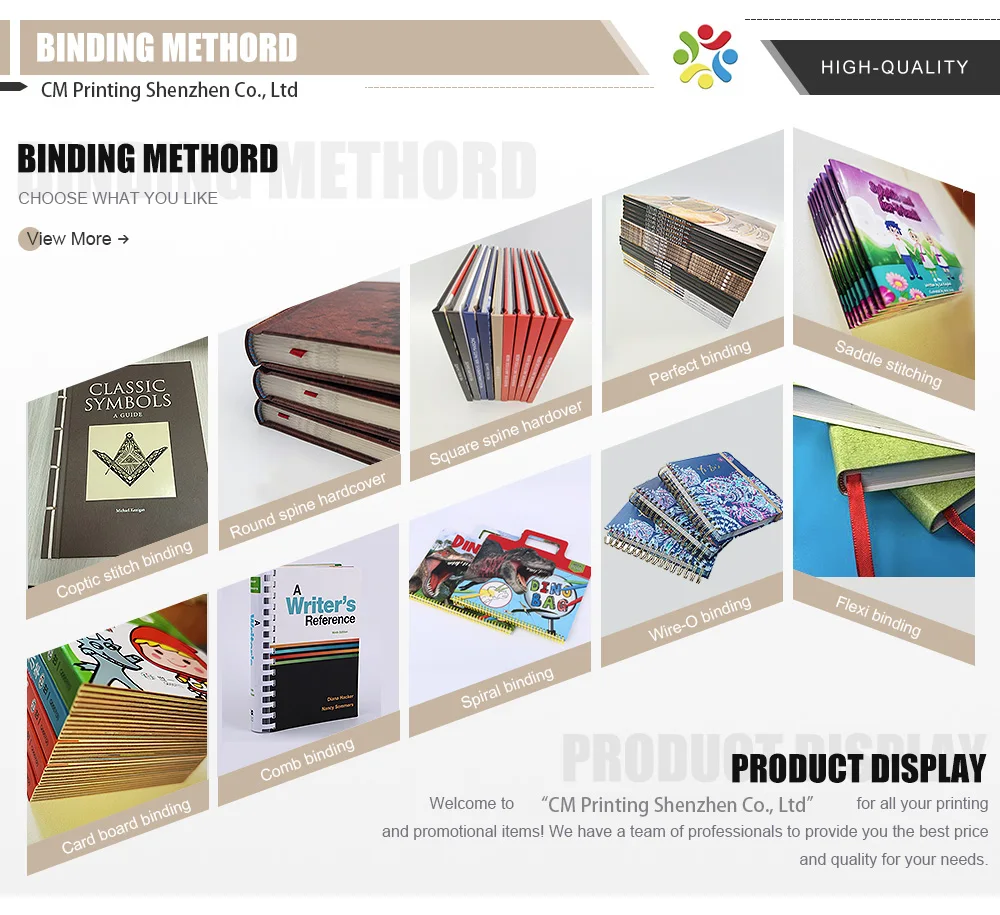When you start a book project, picking the right binding is one choice that really matters. The way you hold your pages together shapes the look, life span, and ease of use of the final book. Below, we break down the main binding methods, list their pros and cons, and give tips on matching one to your goals.
Understanding Different Types of Book Binding
Binding takes many forms, each aimed at a different audience or purpose. The options most often found in print shops include:
- Perfect Binding: This glue-based spine is the workhorse of paperback publishing. Pages are stacked, glued at the edge, and trimmed, creating a flat, polished appearance. Perfect binding suits novels, magazines, and thick catalogs thanks to its low cost and broad styling options.
- Saddle Stitching: Here, sheets are folded, lined up, and stapled along the crease. The finish is neat but best for slim projects like brochures, zines, and short booklets. While affordable, saddle stitching caps page count and wears faster than sturdier binds.
- Case Binding: Sometimes called hardcover binding, this approach stitches the pages together and glues them into a stiff cover. Publishers choose it for textbooks, art books, and other premium titles because the finished product can take a beating and stay intact.
- Spiral Binding: With spiral binding, a coil of plastic or metal snakes through holes along the spine, letting pages swivel open flat. Its low-profile, flexible style is perfect for instruction manuals, cookbooks, sketch pads, or any project that gets constant page flips.
Factors to Consider When Choosing Book Binding
Before you settle on a binding style, think about a few key points:
- Purpose of the Book: Ask yourself what the book will be used for. Will people read it once, reference it at work, or display it on a shelf? Knowing the main job of the book helps you pick a binding that suits its life plan.
- Budget: Every binding method costs a different amount of money and time. Perfect binding usually sits at the bottom of the price chart while case binding climbs to the top. Compare your budget with the quality you need, and look for a method that meets both goals.
Page Count: The total number of pages in your manuscript will narrow down the binding choices you can use. Saddle stitching, for example, works best with slimmer books, whereas case binding can handle hefty volumes without breaking a sweat.
Aesthetic Appeal: How your book looks on the shelf, or in a readers hands, matters a lot if you have a specific audience in mind. Different binding styles add their own flair, so think about which one matches the mood and brand of your project.
Durability: For books that will get tossed around or need to last for decades, strength should top your wish list. In that case, case binding usually outlasts the other options and stands up to heavy use.
The Process of Book Binding
After you pick a binding style, its smart to learn what the actual production work looks like. With perfect binding, the pages get sorted, trimmed, and then glued along the spine, creating a clean, flat edge. Case binding is a tougher job: the pages are sewn into signatures first, and only then are those sewn groups glued into a hard cover. Knowing these steps lets you plan realistic deadlines and budget for any extra costs.
Industry Trends in Book Binding
Book binding keeps changing as new tools appear and readers want different things from their books. Three big trends today show where the field is heading:
- Sustainable Binding Options: People care more about the planet, so publishers are choosing greener glues, covers, and inner pages made from recycled stock.
- Custom Binding Solutions: Self-publishing authors now look for eye-catching formats, like lay-flat or spiral spines, so their titles stand out on crowded shelves.
- Digital Integration: Machines linked to online print services can bind books the moment an order arrives, cutting waste and speeding delivery.
Choosing the right binding for your project still requires thought, since the spine and cover touch how readers feel the book in hand. By learning each system, weighing costs, and watching new techniques, you can pick a style that matches your goals and pleases your audience.

